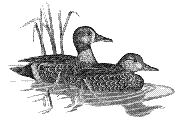US Fish & Wildlife Service
Date of this Version
January 1993
Abstract
Wetlands are among the most productive ecosystems on earth (Fig. 1) and are often characterized by lush growths of hydrophytes. However, direct consumption of wetland plants by animals is relatively low, and, therefore, much of the biomass and energy assimilated by hydrophytes becomes detritus or senesced plant litter. Nutrients released by detritus into the water and soil are assimilated by microorganisms, algae, plants, and small aquatic animals. Through this process, energy is transferred from detritus to other biotic components of a wetland. Plant litter ultimately decomposes.
Litter processing is regulated by environmental factors, microbial activity, the presence and abundance of aquatic invertebrates, and in some wetlands by vertebrate herbivores, such as muskrats, nutria, fishes, and snow geese. Microbes usually contribute most significantly to litter decay through oxidation of organic matter. Large numbers of invertebrates may feed and live on plant litter after microbial conditioning. Detritus is one of several important substrates and energy sources for wetland invertebrates that in turn provide forage for vertebrates, such as fishes, waterfowl, shorebirds, and wading birds. When their dietary needs for animal proteins are high (e.g., during molt and reproduction), waterbirds forage heavily on invertebrates. Therefore, the role of invertebrates in detrital processing is of particular interest to wetland managers and waterbird biologists.
Understanding the dynamics of litter processing promotes a broader perspective of wetland functions and more specifically enhances an understanding of detrital-based invertebrate ecology. Here I discuss the production of litter, some details of decomposition and nutrient cycling, and the role of invertebrates in detrital processing.


Comments
Published in Diana H. Cross and Paul Vohs (eds.) Waterfowl Management Handbook. Fort Collins, CO: U.S. Fish and Wildlife Service, 1988. Online at http://www.nwrc.usgs.gov/wdb/pub/wmh/contents.html